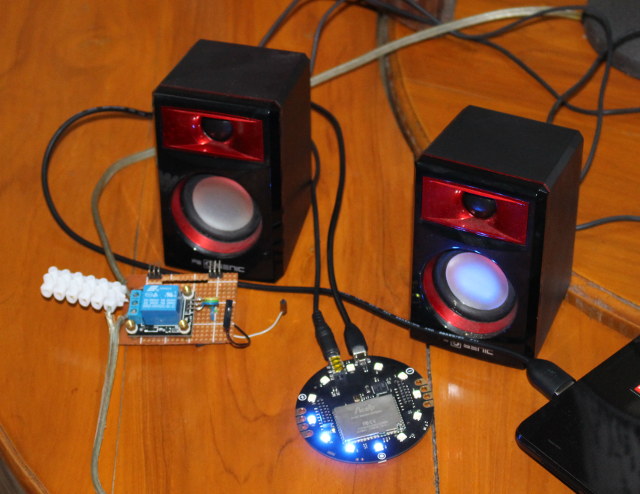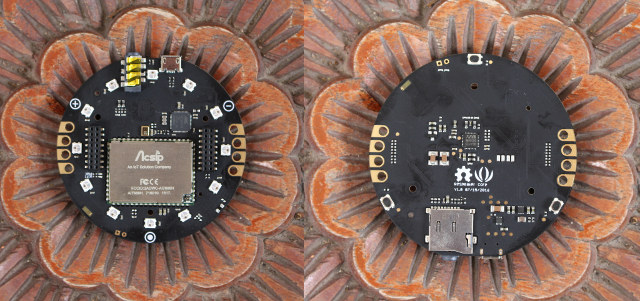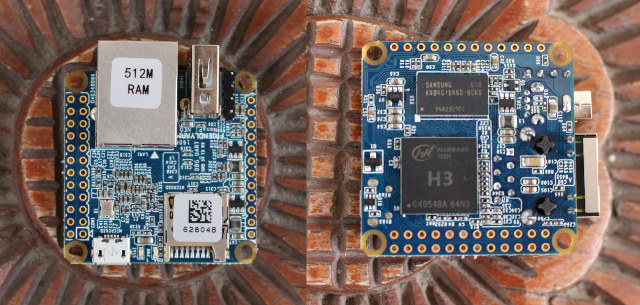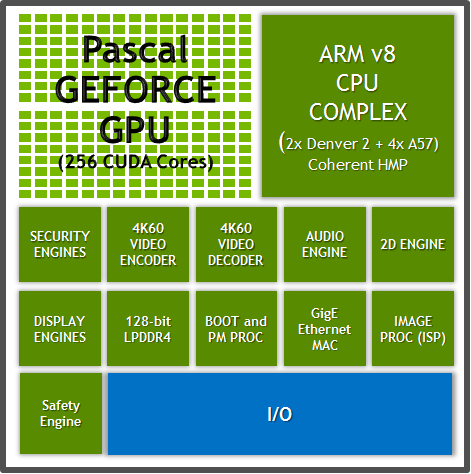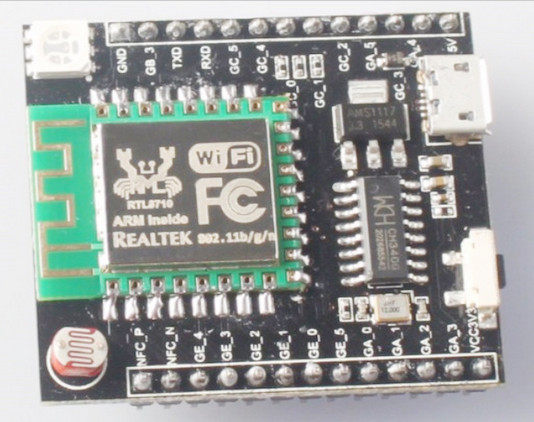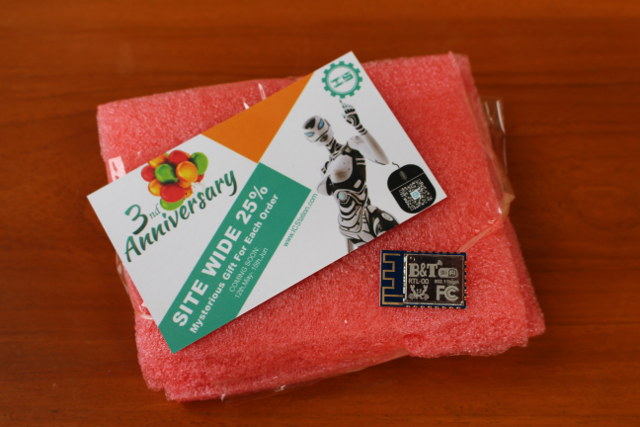Allwinner has mixed relationships with open source communities such as Kodi, especially due to issues with its closed-source CedarX VPU drivers, and some GPL violations. However to address the former, linux-sunxi community has been working on open source Cedrus library for the video processor unit on Allwinner processors, that’s been successfully tested on boards such as Orange Pi One. Free Electrons has gone further, as they’ve made sure Cedrus now works with Linux mainline kernel, currently Linux 4.8, and tested it on Allwinner R8 based Pocket CHIP. The work has been done by Florent Revest, a 19 years old intern at the company, who delivered a new sunxi-cedrus driver, a Video4Linux (V4L2) memory-to-memory decoder kernel driver, and corresponding VA-API backend, with the implementations currently available on Github here and there respectively. Currently only MPEG2 and MPEG4 are working, but adding other codecs such as H.264, and video encoding is possible […]
Getting Started with ReSpeaker WiFi IoT Board’s Audio Capabilities, Voice Recognition and Synthesis
ReSpeaker is a development board combining an Atmel AVR MCU, a MediaTek MT7688 WiFi module running OpenWrt, a built-in microphone, an audio jack, and I/O headers to allow for voice control and output for IoT applications. That means you could make your own Amazon Echo like device with the board and add-ons, use it as a voice controlled home automation gateway and more. The board was launched on Kickstarter a few days ago, and already raised $100,000 from about 100 backers, but I’ve received an early sample, so I’ll provide some more information about the firmware, and shows how to use with some Python scripts leveraging Microsoft Bing Speech API. You’ll need a micro USB to USB cable to connect your to computer (Linux, Windows, Mac OS…), and a speaker to connect to the board. Linux (OpenWrt) boots in a few seconds, and once it’s done all RGB LED will […]
ReSpeaker WiFi IoT Board is Designed for Voice Interaction (Crowdfunding)
More and more devices are supporting voice interaction nowadays from your smartphone to devices like Amazon Echo, but so far, I had not seen development boards specifically designed for that purpose, and that’s exactly what Seeed Studio ReSpeaker board does by combining audio capabilities, WiFi connectivity, and I/O headers. ReSpeaker Core board specifications: WiFi Module – Acsip AI7688 Wi-Fi 802.11 b/g/n module based on Mediatek MT7688 MIPS SoC Storage – micro SD card slot USB – 1x micro USB port for programming and power Audio – 3.5mm AUX port, WM8960 audio codec, 2-pin header for external speakers Expansion – 2x 8-pin expansion headers for I2C, GPIO and USB 2.0 host connected to MT7688, built-in microphone. MCU – Atmel ATMega32U4 @ 16 MHz Misc – 12x RGB LEDs, 8x touch sensors, 3 push buttons Power Supply – 5V DC Dimensions – 70mm diameter Weight – 70 grams The board runs OpenWrt, […]
NanoPi NEO Board Gets Armbian Debian 8 & Ubuntu 16.04 with Linux 4.6 & 4.7 (Mainline), h3consumption Power Consumption Tool
We’ve been blessed with a wide range of low cost Allwinner H3 boards thanks to Shenzhen Xunlong Orange Pi and FriendylARM NanoPi boards. Recently, armbian developers have been focusing on NanoPi NEO board, and they’ve now released Debian Jessie and Ubuntu Xenial with Linux 4.6.7 and Linux 4.7.2. The latter is mainline kernel with some patchsets for Ethernet. You can download the Linux 4.6.7 based “beta” images from armbian NanoPi NEO page, and selected the “Vanilla” versions, then flash then one a micro SD card as you would normally do. Linux 4.7.2 based “experimental” images with USB OTG support and schedutil cpufreq governor can be found on the separate server in a temporary directory. Thomas Kaiser explains further: Ethernet and throttling are working (the latter not as efficient as with legacy kernel but at least it protects the SoC from overheating). Please note that all vanilla kernel images currently suffer from […]
Nvidia Provides More Details About Parker Automotive SoC with ARMv8 Cores, Pascal GPU
Nvidia demonstrated DRIVE PX2 platform for self-driving cars at CES 2016, but did not give many details about the SoC used in the board. Today, the company has finally provided more information about Parker hexa-core SoC combining two Denver 2 cores, and four Cortex A57 cores combining with a 256-core Pascal GPU. Nvidia Parker SoC specifications: CPU – 2x Denver 2 ARMv8 cores, and 4x ARM Cortex A57 cores with 2MB + 2 MB L2 cache, coherent HMP architecture (meaning all 6 cores can work at the same time) GPUs – Nvidia Pascal Geforce GPU with 256 CUDA cores supporting DirectX 12, OpenGL 4.5, Nvidia CUDA 8.0, OpenGL ES 3.1, AEP, and Vulkan + 2D graphics engine Memory – 128-bit LPDDR4 with ECC Display – Triple display pipeline, each at up to 4K 60fps. VPU – 4K60 H.265 and VP9 hardware video decoder and encoder Others: Gigabit Ethernet MAC Dual-CAN […]
Realtek RTL8710 Witty-like WiFi IoT Board with micro USB Port Sells for $8 / 35 RMB
Realtek RTL8710 could eventually become a serious competitor to ESP8266, as it’s based on ARM Cortex M3, provides many of the same features, and sells for roughly the same price. While currently software support is still work in progress and community is very small, I’ve recently written a quick start guide using AT commands to control RTL8710 connectivity in station and access point mode, and commands are also available for GPIO, OTA firmware updates, servers… This however requires some soldering and a USB to TTL debug board, and is not quite as convenient as ESP8266 board like NodeMCU. Some RTL8710 and RTL8195 development boards are already available but they cost over $25, but I’ve been informed of a cheap no-name RTL8710 board with a micro USB port for programming and power, and well as headers with GPIOs, UARTs, NFC, and power pins, that looks somewhat similar to ESP8266 Witty board. […]
Teensy 3.5 & 3.6 Boards Feature NXP Kinetis K64 & K66 MCUs (Crowdfunding)
Paul Stoffregen has been making Teensy USB MCU development boards since 2008, and has just launched the latest Teensy 3.5 & 3.6 boards powered by NXP (previously Freescale) Kinetis K64 & K66 ARM Cortex-M4 MCUs with a micro USB port for power and programming, a micro SD slot, and several I/Os. Boards specifications: MCU Teensy 3.5 (T3.5) – NXP Kinetis K64 ARM Cortex M4 MCU @ 120 MHz with FPU, 512KB flash, 192 KB RAM, 4K EEPROM Teensy 3.6 (T3.6) – NXP Kinetis K66 ARM Cortex M4 MCU @ 180 MHz with FPU, 1MB flash, 256KB RAM, 4K EEPROM Storage – micro SD card port USB – 1x USB Full Speed (12 Mbit/sec) Port; T3.6 only: 480 Mbit/sec host port Connectivity – 10/100M Ethernet mac 62x I/O Pins (42 breadboard friendly) 25x Analog Inputs to 2 ADCs with 13 bits resolution 2x Analog Outputs (DACs) with 12 bit resolution 20x […]
Getting Started with B&T RTL-00 RTL8710 Module – Serial Console, AT Commands, and ESP8266 Pin-to-Pin Compatibility
The announcement of the ultra-low cost ARM based Realtek RTL8710 WiFi modules for IoT applications generated quite a lot of buzz since they can potentially compete with the popular ESP8266 modules. The main problem at the time was documentation and software support, but after some searches we could find that RTL8710 was part of Realtek Ameba family, and found some documents and an SDK for RTL8710/RTL8711/RTL8195. ICStation also kindly provided one B&T RTL-00 module for review, which costs $3.55 shipped per unit, and as low as $2.85 if you purchase 10 or more. The question here is how to get started? The answer can be found in page 8 of the Chinese datasheet for the module with GB0 and GB1 pins used for Tx and Rx to access the serial console. Time for some soldering… For the first test, we’ll just need Tx (GB1), Rx (GB0), GND and 3.3V, and […]



